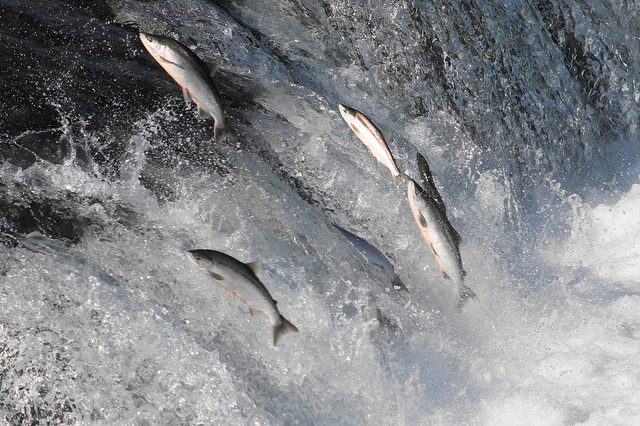A study by a British Columbia university has attempted to answer the age-old question of why young salmon leap.
“Ideas about why fish leap include getting over obstacles during their upstream migration as adults, catching food and avoiding predators,” said Emma Atkinson, an aquatic ecologist from Simon Fraser University in a press release.
“However, these reasons may not apply to young salmon since their diet is composed almost exclusively of underwater zooplankton and their tendency is to scatter rather than leap when escaping from predators.”
Atkinson hypothesised that the leaping behaviour could in fact be the fish’s way of removing sea lice.

To test her hypothesis, Atkinson and her team caught wild juvenile sockeye salmon during their coastal migration away from the Fraser River, Western Canada.
They held the fish in flow-through net-pen enclosures, half of which were covered with netting to prevent leaping and the other half were left uncovered to allow leaping. After three days, the team counted the lice on each fish.
The researchers found that, on average, the salmon that were allowed to leap in the uncovered pen had 22 per cent fewer sea lice compared to those that weren’t allowed to leap in the covered pen.
The researchers also found that it may take more than 50 leaps for a young salmon to dislodge a sea lice, which Atkinson acknowledges is a substantial amount of energy to expend. She says these costs may be offset by the benefits of successfully removing sea lice, but will have to be investigated in another study.

